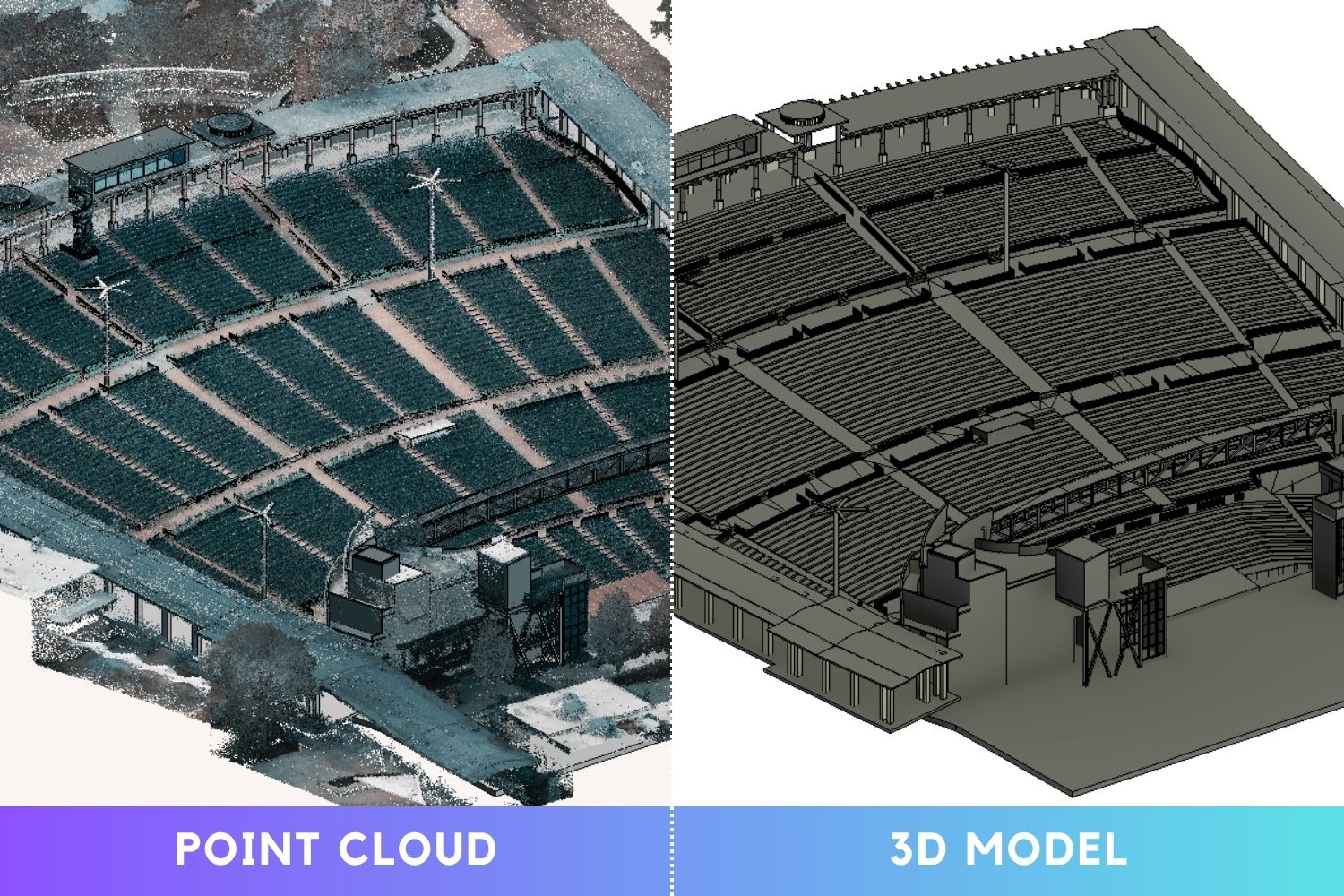Laser Scan to BIM Model of an Amphitheater
Project Overview
CRESIRE partnered with a prominent musical theatre company in USA. Our team coordinated with the project’s decision-makers to understand their requirements and deliver the suitable formats of the 3D models.
We used the laser-scanned data in RCP format for point cloud modeling and developed usable Revit and CAD models for effective planning. The stunning musical theatre is one of its kind and is one of the biggest outdoor amphitheaters in USA.

Scope of Work
Reviewing Point Cloud Data: The project began with a thorough review of the point cloud data provided in RCP format. This step was crucial for understanding the existing conditions of the office building and identifying any potential challenges early in the process.
Developing 3D Model in Revit: Utilizing Revit, we translated the point cloud data into a highly detailed 3D BIM model. This LOD 400 model accurately represented the building’s architectural elements, providing a solid foundation for further development and analysis.
Generating Elevational Views and 2D Plans: We generated precise elevational views and 2D plans from the 3D model to support effective renovation planning and facilities management. These deliverables facilitated better decision-making and planning for the architectural firm, ensuring the renovation process was efficient and well-coordinated.
Challenges and Solutions
Complexity of Laser Scan Data Integration
Integrating the laser-scanned data in RCP format into the modeling process required meticulous attention to detail to ensure accuracy and precision. Handling large datasets and converting them into usable 3D models posed a significant challenge.
Customization to Meet Specific Requirements
Understanding and addressing the unique requirements of the project’s decision-makers necessitated extensive communication and coordination. Customizing the 3D models to align with their needs required a flexible and adaptive approach.
Ensuring Compatibility Across Platforms
Delivering the final models in both Revit and CAD formats demanded thorough validation to ensure seamless compatibility and usability. Ensuring that the models could be effectively utilized for planning and execution without any technical issues was a critical challenge.
Managing Project Timelines
Coordinating with multiple stakeholders and ensuring timely delivery of the models while maintaining high-quality standards required effective project management and resource allocation.
